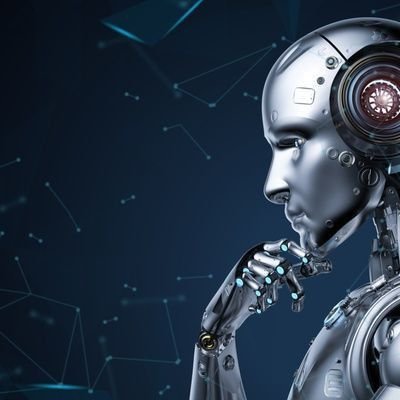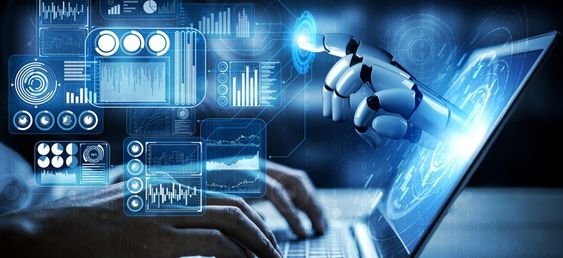
Disasters strike without warning, leaving destruction, chaos, and human suffering in their wake. Earthquakes, hurricanes, wildfires, and floods often make it difficult for first responders to reach affected areas quickly. Robots have emerged as powerful allies in disaster relief efforts, supporting search-and-rescue missions, delivering supplies, and assessing hazardous environments. Engineers and scientists continuously develop robotic technologies to enhance efficiency, safety, and response times in crisis situations.
The Role of Robots in Disaster Relief
Robots provide crucial assistance during disaster relief operations. They enter environments too dangerous for humans, speed up rescue missions, and improve overall response effectiveness. Various types of robots serve different roles in disaster scenarios, including search and rescue, damage assessment, and logistics support.
Search and Rescue Operations
Robots help locate and rescue survivors in disaster-stricken areas, where debris, fire, or toxic fumes create hazardous conditions for human rescuers. Autonomous drones, robotic dogs, and snake-like robots navigate through rubble and collapsed buildings to find trapped individuals.
Examples of Search and Rescue Robots:
- Autonomous Drones:
- Drones equipped with thermal imaging cameras scan disaster zones for heat signatures of survivors.
- They provide real-time aerial footage to emergency teams, helping them strategize search operations.
- Robotic Dogs:
- Quadrupedal robots, such as Boston Dynamics’ Spot, maneuver through unstable terrain to identify survivors.
- These robots communicate with first responders and relay data, reducing human risk in unstable areas.
- Snake Robots:
- Flexible, elongated robots slither through small crevices in collapsed structures.
- They carry cameras and sensors to detect life signs and monitor conditions inside debris.
Disaster Damage Assessment
Disasters often leave behind widespread destruction, making it difficult to assess the extent of damage. Robots gather crucial information, allowing responders to evaluate structural integrity, environmental risks, and recovery plans.
Technologies Used in Damage Assessment:
- Aerial Drones:
- Drones survey disaster-hit areas, mapping affected zones for better planning.
- High-resolution imaging helps officials assess structural damage and infrastructure stability.
- Underwater Robots:
- Autonomous underwater vehicles (AUVs) inspect submerged buildings and bridges.
- These robots monitor pollution levels in flooded areas, preventing waterborne disease outbreaks.
- Ground-Based Rovers:
- Rugged, all-terrain robots examine buildings for cracks, gas leaks, and structural hazards.
- Equipped with AI-based analysis tools, they assist in evaluating repair priorities.
Delivering Medical Aid and Supplies
Robots play a vital role in delivering essential supplies, such as food, water, and medical aid, to affected populations. In areas where roads become inaccessible due to debris or flooding, robotic delivery systems ensure that relief efforts continue without delays.
Supply Delivery Robots:
- Drone Delivery Systems:
- Companies like Zipline use drones to transport medical supplies to disaster-hit areas.
- These drones carry vaccines, blood, and emergency kits over long distances, reaching remote communities.
- Autonomous Ground Vehicles:
- Self-driving robots transport heavy loads, including food rations and medical supplies.
- These machines operate in hazardous environments, preventing exposure to rescue teams.
- Marine Robots:
- Autonomous boats ferry aid supplies across flooded regions and island communities.
- Some are equipped with robotic arms to retrieve stranded victims from waterlogged areas.
Firefighting and Hazard Containment
Fires often erupt after disasters, exacerbating damage and endangering lives. Robots equipped with firefighting capabilities minimize risks by tackling blazes in hazardous environments.
Firefighting Robots:
- Remote-Controlled Firefighting Vehicles:
- Robots like the Colossus Firefighting Robot withstand extreme heat and navigate burning buildings.
- They spray water and suppress flames, allowing human firefighters to focus on search-and-rescue efforts.
- Fire Surveillance Drones:
- AI-driven drones monitor wildfires, tracking their movements and predicting their spread.
- These drones relay real-time data to fire departments, helping them plan containment strategies.
- Chemical Spill Containment Robots:
- Robots equipped with biohazard containment tools manage toxic chemical leaks.
- They neutralize hazardous substances and prevent environmental contamination.
Communication and Coordination in Disaster Zones
Disasters often damage communication networks, making it difficult for emergency teams to coordinate rescue operations. Robots assist by restoring connectivity and providing situational awareness.
Robots Enhancing Communication:
- Signal-Boosting Drones:
- Drones equipped with Wi-Fi and cellular towers establish temporary networks in affected areas.
- They enable first responders and survivors to communicate when traditional networks fail.
- AI-Powered Coordination Bots:
- AI-driven robots process disaster data, organizing relief efforts based on real-time analytics.
- These systems allocate resources efficiently, ensuring critical needs receive priority.
- Autonomous Survey Vehicles:
- Self-driving rovers equipped with sensors patrol disaster zones, providing real-time mapping data.
- They track survivor locations, debris conditions, and access routes for responders.
Robots in Nuclear Disaster Relief
Nuclear disasters pose extreme risks to human responders due to radiation exposure. Robots mitigate these dangers by performing hazardous tasks inside contaminated zones.
Examples of Robots in Nuclear Disaster Response:
- Radiation Detection Drones:
- Drones scan radioactive sites, identifying hotspots without endangering human lives.
- They relay data to scientists, helping them strategize decontamination efforts.
- Remote-Controlled Decontamination Robots:
- Robots scrub surfaces and collect radioactive debris to reduce contamination levels.
- Machines like Toshiba’s Fukushima Cleanup Robot perform complex decontamination tasks in high-radiation areas.
- Nuclear Plant Inspection Robots:
- Robots navigate reactor sites, inspecting damaged infrastructure.
- They provide critical insights into radiation leaks, reactor stability, and potential containment measures.
Challenges in Deploying Robots for Disaster Relief
Despite their effectiveness, disaster relief robots face several challenges that engineers must address:
- Battery Life and Power Supply: Robots often need extended operation times, but battery limitations restrict their effectiveness.
- Navigation in Unstructured Terrain: Uneven landscapes, debris, and collapsed structures make maneuverability difficult for robots.
- AI Decision-Making: Robots rely on AI to assess situations, but unpredictable disasters require improved adaptability.
- Connectivity Issues: Remote locations and communication breakdowns hinder real-time data transmission between robots and response teams.
The Future of Disaster Relief Robotics
The future of disaster relief robotics looks promising, with several advancements set to improve efficiency and effectiveness:
- Swarm Robotics: Groups of autonomous robots working together to coordinate large-scale disaster responses.
- AI-Driven Decision Systems: Smarter AI models that improve adaptability in unpredictable disaster conditions.
- Self-Sustaining Robots: Machines powered by renewable energy sources to operate in long-term disaster scenarios.
- Exoskeleton-Assisted Rescue Teams: Wearable robotic exoskeletons to help human responders navigate debris and carry heavy loads.
Conclusion
Robots have revolutionized disaster relief efforts, offering life-saving solutions in the most dangerous situations. They assist in search-and-rescue operations, damage assessment, medical aid delivery, fire containment, and communication restoration. As technology continues to evolve, robots will become even more efficient, ensuring faster, safer, and more effective disaster response efforts. Investing in AI, robotics, and automation will strengthen global resilience against natural and man-made disasters, ultimately saving more lives and reducing the impact of catastrophic events.








